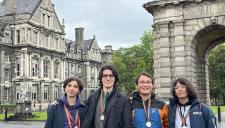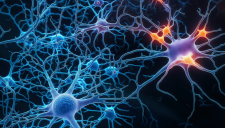A research group from Scuola Normale has developed for the first time a transgenic model capable of reproducing the distinctive features of HSAN V, a pathology that determines a congenital inability to perceive pain. The study published in The Journal of Neuroscience.
Pain is an unpleasant but physiological sensory response that protects us from harmful and self-injurious behavior. Sometimes, however, the pain becomes chronic, manifesting itself in the absence of the causes that initially generated it. Shedding light on the ways in which the brain interprets the sensation of pain and constructs its perception is one of the research objectives of the Bio@SNS Laboratory of Biology at Scuola Normale, directed by Antonino Cattaneo.
In an original approach, Bio@SNS researchers studied the opposite phenomenon, a rare genetic pathology known as Hereditary Sensory and Autonomic Neuropathy type V (HSAN V), which determines in congenital individuals a congenital inability to perceive pain and to respond to nociceptive stimulations. Bio@SNS researchers developed for the first time a transgenic model capable of reproducing the distinctive traits of this pathology. The study, just published in The Journal of Neuroscience, sets the basis for developing a new generation of analgesics that may act much more effectively on chronic pain than current clinical treatments.
The HSAN V pathology is due to an anomalous behavior of the NGF (Nerve Growth Factor) protein, the molecule discovered by Rita Levi-Montalcini: in particular to the genetic mutation of only one of the 118 amino acids that make up the protein itself. Individuals with HSAN V are unable to adequately feel pain, but do not have cognitive deficits, despite the importance of NGF also in learning processes.
The transgenic model developed by the Bio@SNS researchers allowed to demonstrate that the mutation in the NGF gene causes a reduced perception of pain, but maintains the ability of this protein to promote the survival and the correct development of the structures of the nervous system peripheral responsible for the transmission of painful brain signals.
"Understanding the mechanisms that can compromise the ability to perceive harmful stimuli - explains Simona Capsoni, coordinator of the study - can represent an alternative way to shed light on how instead the brain perceives pain, starting from peripheral signals. Studying those who live without pain can also help develop new therapeutic approaches to treat pain more effectively. Antibodies that inhibit NGF and / or its receptor are in fact in clinical trials for chronic pain. Our research group is working on this ».
In this sense, “the results of the study just published on the NGF mutant suggest - as Giovanna Testa states, who has just earned her PhD in Neuroscience - that molecules capable of reproducing its particular properties may inspire a new generation of analgesic drugs for the treatment of chronic pain.
The study has as its first author Giovanna Testa, and was conducted in collaboration between the Bio@SNS Laboratory and research groups at EMBL (Monterotondo), EBRI (Rome), CNR (Institute of Neuroscience in Pisa and Institute of Biochemistry and Cell Biology in Rome), coordinated by Simona Capsoni (University of Ferrara as well as Scuola Normale) and Antonino Cattaneo. The research was funded by Telethon and the European Community (PAINCAGE Project, a consortium of 9 partners coordinated by Scuola Normale).











